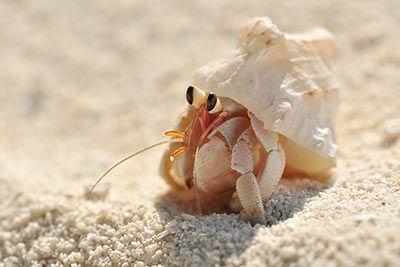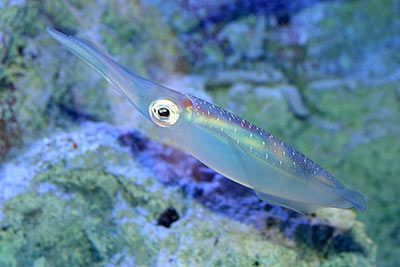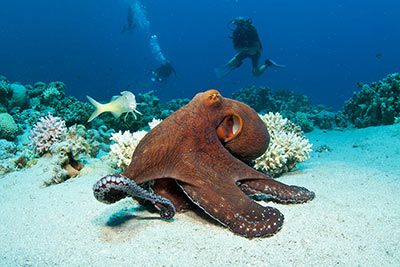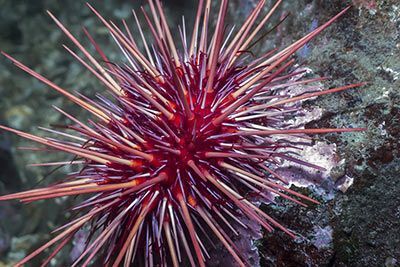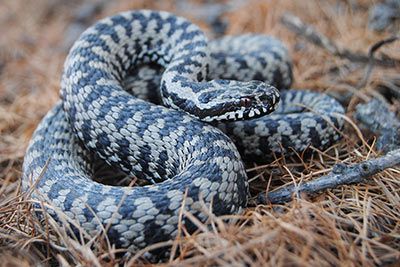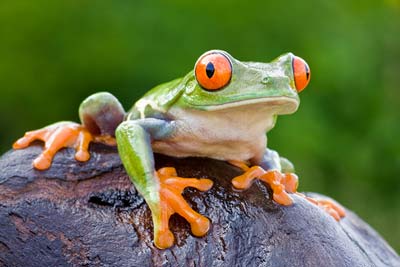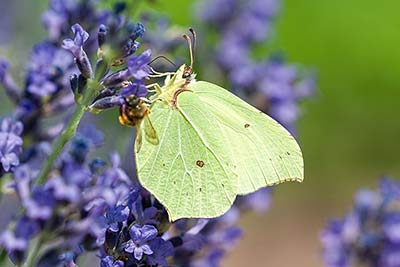Sea Cucumber
Sea Cucumber Facts
| Size | 4-12 inch (10-30 cm) |
| Speed | Unknown |
| Weight | Unknown |
| Lifespan | 5-10 years |
| Food | Plankton |
| Predators | Starfish, fish, crabs |
| Habitat | In oceans worldwide |
| Phylum | Echinodermata |
| Class | Sea cucumbers |
| Scientific name | Holothuroidea |
| Characteristics | Long, worm-like animal |
Main Characteristics
Sea cucumbers are not a kind of vegetable, but animals. They are named sea cucumbers because of the shape of their body, which resembles a cucumber. There are more than 1,200 species of sea cucumbers. Most of the time they live on the ground of the sea.
Habitat
Where do Sea Cucumbers Live?
Sea Cucumbers live on coral reefs but also in the deep sea. In depths of 4-5.5 miles (8-9 km), sea cucumbers make up about 90% of the “biomass” (= mass/amount of living creatures per sector).
Anatomy and Appearance
How Big Do Sea Cucumbers Grow?
There are about 1,200 species of sea cucumbers. The smallest is 0.1 inch (3 mm) long and the longest 3-6.5 feet (1-2 meters) with a diameter of 9.4 inch (24 cm).
How Do Sea Cucumbers Breathe?
Sea cucumbers have a unique way to breathe. They have two respiratory “trees” that branch off their cloaca into their body. The animals breathe by sucking in water through their anus and distribute it into the treelike branches in order to retrieve the oxygen from it.
Life Style
Sea Cucumbers Are Sociable
The red strawberry sea cucumber lives in groups of up to 93 animals per square feet (1,000 animals per square meter). In their home region New Zealand such colonies are also called strawberry fields.
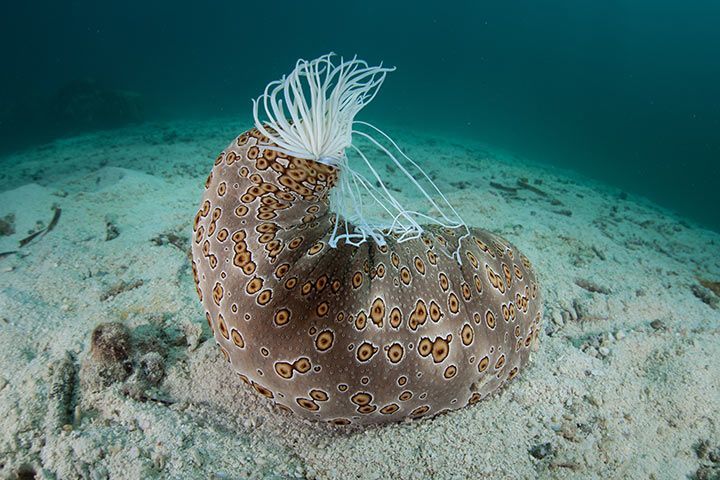
Importance for the Ecosystem
Sea cucumbers are capable of "bioturbation." The word "turbation" is Latin and means turbulence. And that is exactly what the animals do. They churn up the seabed when feeding. To be more precisely, they swallow the sand and feed on the algae that live in it. In the end, well ventilated and clean sand comes out “at the other end”. Sea cucumbers can also be called earthworms of the sea because they loosen and improve the soil. They also enrich the water with important nutrients that help corals grow and ensure that the water is less acidic.
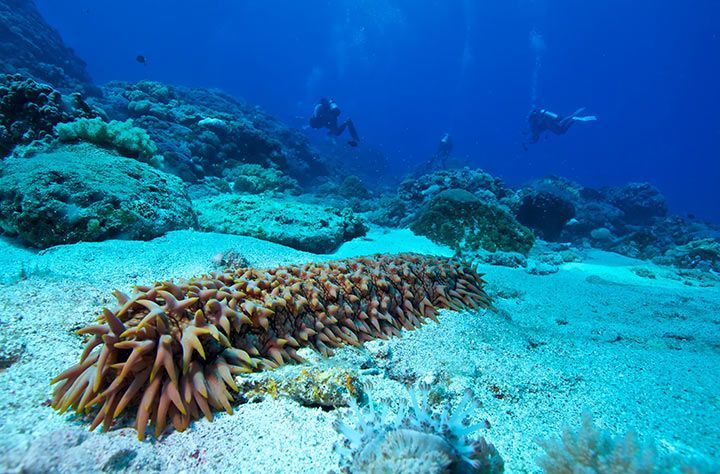
Enemies and Threats
How Do Sea Cucumbers Defend Themselves?
The respiratory system of the sea cucumber is quite unusual – or to put it more bluntly: disgusting for us humans. The sea cucumber’s manner of defense is equally nasty: It ejects its intestines. Who would not be confused by this? Enemies are stunned for a little while until they understand what’s going on – enough time for the sea cucumber to make an escape. Sometimes the sea cucumber also ejects its intestines to get rid of parasites. It simply reproduces itself afterwards (!). Another method of defense is to emit slime which is so sticky that you need a knife to scrape it off.
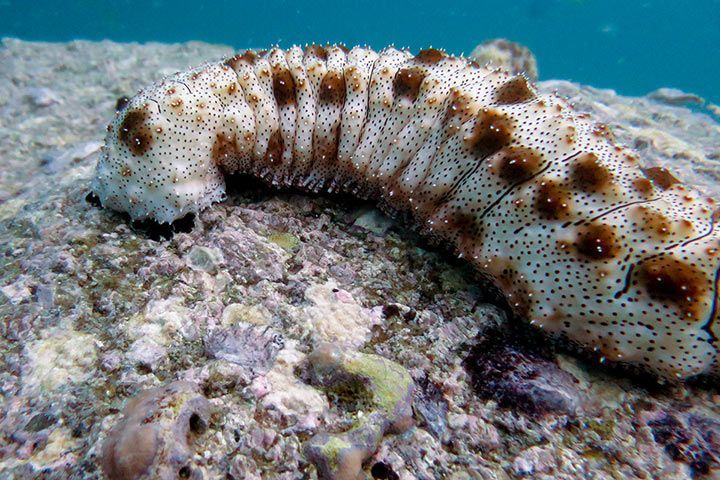
Reproduction
Female sea cucumbers eject their eggs into the water and the males do the same with their semen. The eggs get fertilized by the semen. Some sea cucumber species can also reproduce by fission.
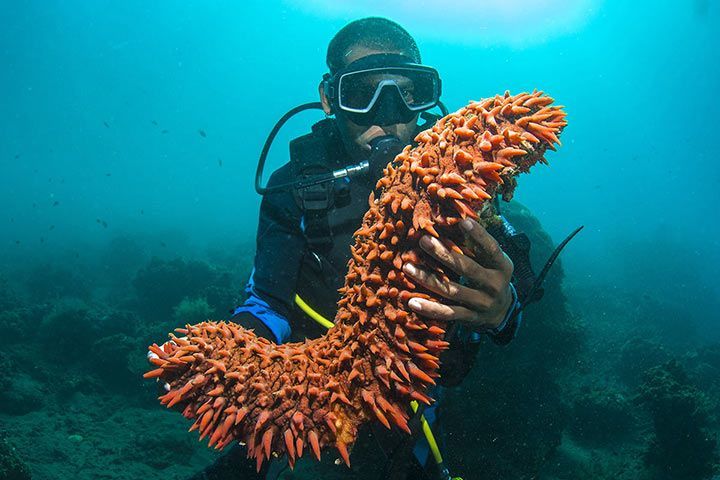
- Find Out More:
- Sea Urchin Facts
- Starfish Facts




